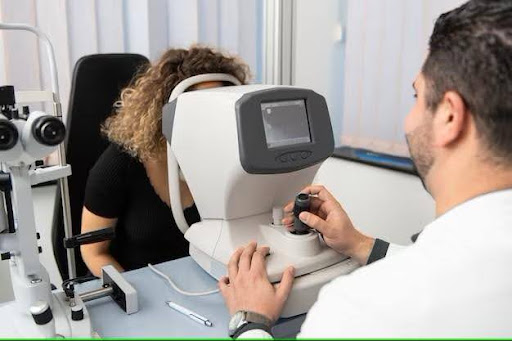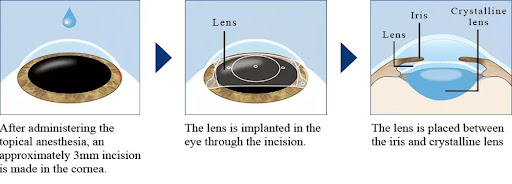Undeniably, today’s world is driven by technological progress, even our approach to eye care has undergone transformational changes. The landscape of ocular health is evolving, ushering in an era marked by groundbreaking innovations.
This article delves into the future of eye care, unraveling the myriad ways technology including contributions from pioneers like Eyeonce Eye Clinic and their exceptional eye doctors, Dr. Paik Dong Won and Dr. Jung Sae Rom, is reshaping how we perceive and address ocular health issues. From diagnostic precision to personalized treatment plans, their eye care expert showcases how their advanced eye technologies are revolutionizing eye care.
How do Technologies Enhance Ophthalmology?
Technological advancements have significantly enhanced various aspects of ophthalmology, contributing to more accurate diagnostics, effective treatments, and improved patient care. Eyeonce Eye Clinic, like many modern ophthalmic practices, leverages these technologies to offer cutting-edge services. Here are some ways in which technologies have improved ophthalmology.
Digital Imaging and Diagnostic Tools
- High-resolution digital imaging and diagnostic tools, such as Optical Coherence Tomography (OCT) and fundus photography, enable detailed and precise imaging of the eye’s structures.
- Eyeonce Eye Clinic utilizes these technologies to detect and monitor conditions like glaucoma, macular degeneration, and diabetic retinopathy at earlier stages, facilitating timely intervention
Telemedicine and Remote Monitoring
Telemedicine platforms allow for remote consultations and monitoring, improving accessibility to eye care services. Patients at Eyeonce Eye Clinic can benefit from virtual consultations, reducing the need for frequent in-person visits, especially for follow-up appointments.
Laser Technology for Refractive Surgery
- Advanced laser technologies, such as LASIK (Laser-Assisted In Situ Keratomileusis), are employed by Eyeonce Eye Clinic to correct refractive errors like myopia, hyperopia, and astigmatism. These procedures offer quicker recovery times and precise outcomes.
Disruption of Circadian Rhythm
- Technological innovations in contact lenses, such as smart lenses that monitor intraocular pressure or detect glucose levels for diabetic patients, contribute to the proactive management of eye conditions. Eyeonce may recommend and prescribe these advanced contact lenses based on individual patient needs.
Electronic Health Records (HER) Systems
- Digital record-keeping systems streamline administrative tasks and improve the overall efficiency of Eyeonce Eye Clinic. EHRs facilitate seamless communication between healthcare professionals, ensuring comprehensive and coordinated patient care.
Eyeonce stays at the forefront of ophthalmic care, offering patients advanced and personalized treatments while improving overall efficiency and accessibility to eye care services.
Premium Eye Technologies at Eyeonce
Each of these equipment plays a crucial role in diagnosing, treating, and managing a wide range of eye conditions, emphasizing the importance of advanced technology in modern eye care. Eyeonce Eye Clinic utilizes these tools to offer comprehensive and accurate eye care services.
- KR-800 (Corneal Curvature Detector)
Purpose: Measures the curvature of the cornea, aiding in diagnosing refractive errors such as astigmatism. It is crucial for the accurate prescription of glasses and contact lenses.
- SP-1P (Corneal Endothelial Cell Inspector)
Purpose: Examines corneal endothelial cells, essential for assessing the health of the cornea. This information is vital in evaluating conditions like Fuchs dystrophy.
- CT-80 (Contactless Intraocular Pressure Gauge)
Purpose: Measures intraocular pressure, helping in the diagnosis and management of conditions like glaucoma. Early detection is crucial for preventing vision loss.
- Maestro OCT (Corneal CT Camera)
Purpose: Utilizes Optical Coherence Tomography to provide high-resolution images of the cornea. Useful for diagnosing and managing various eye diseases.
- Lens Meter (Glasses Prescription Meter)
Purpose: Measures the prescription of glasses lenses. Essential for determining the correct power of lenses needed for vision correction.
- Humphrey Visual Field (Visual Field Tester)
Purpose: Evaluate the full horizontal and vertical range of vision. Important for detecting and monitoring conditions affecting peripheral vision.
- AB-SCAN (Ultrasound)
Purpose: Uses ultrasound to image the internal structures of the eye. Helpful in assessing conditions like retinal detachments.
- Pentacam (Corneal Topography)
Purpose: Maps the corneal surface, aiding in the diagnosis and treatment planning for conditions like keratoconus.
- Daytona Optos (Ultra-wide Field Retinal Scanner)
Purpose: Captures detailed images of the retina, assisting in the diagnosis and management of various retinal disorders.
- IOL Master 700 (Contactless Cataract Ophthalmoscope)
Purpose: Measures ocular biometry, assisting in the precise calculation of intraocular lens power for cataract surgery.
- OCULUSK5M (Dry-Eye Keratograph)
Purpose: Assesses tear film quality and measures dry eye parameters. Important for managing dry eye conditions.
- Slit Lamp (Polar Microscope)
Purpose: Illuminates and magnifies different parts of the eye, aiding in diagnosing various eye conditions.
- SYL 9000 (Secondary Cataract Laser)
Purpose: Used in YAG laser capsulotomy to treat secondary cataracts that may develop after cataract surgery.
- Ex500 (Excimer Laser)
Purpose: Utilized in refractive surgeries like LASIK for precise corneal reshaping to correct vision.
- Aquacel (Dry-Eye Treatment)
Purpose: Provides treatment for dry eye conditions, addressing symptoms and improving tear film stability.
- Lightlas532 (Retina Laser)
Purpose: Used in retinal laser surgeries to treat conditions such as diabetic retinopathy.
- FEMTO LDV Z8 (Cataract Surgery Equipment)
Purpose: Incorporates femtosecond laser technology for precision in various steps of cataract surgery.
- Centurion (Cataract Surgery Equipment)
Purpose: A cataract surgery system that ensures a controlled and efficient procedure.
- STATIM 2000/5000 (Sterile Disinfection Equipment)
Purpose: Sterilizes and disinfects surgical instruments, and maintains aseptic conditions in the operating room.
- Lumera I (Cataract Surgery Microscope)
Purpose: Provides high-quality visualization during cataract surgery, enhancing precision and safety.
To learn more about these cutting-edge eye technologies, visit Eyeonce Eye Clinic’s website today!
Frequently Asked Questions (FAQs)
The KR-800 measures the curvature of the cornea, aiding in a precise prescription for glasses and contact lenses.
Eyeonce provides a wide range of services, including comprehensive eye exams, laser refractive surgery (such as LASIK), treatment for eye diseases, and vision correction options like contact lenses and eyeglasses.
You can schedule an appointment by calling our clinic directly, visiting our website, or using our online appointment booking system for your convenience.
Conclusion
The advanced eye care equipment at Eyeonce Eye Clinic represents a commitment to precision, innovation, and excellence in vision health. Each tool plays a vital role in diagnosing, treating, and managing various eye conditions, from corneal curvature detection to ultra-widefield retinal scanning. Discover the future of eye care where technology meets expertise, ensuring optimal vision and eye health for all. Visit Eyeonce today!



